In much of the U.S., from now until the ground freezes, it’s time to plant spring-flowering bulbs. Tulips and daffodils are the most popular. Between the two the flowers cover the color spectrum from pure white to purple-black. They leave one big color-wheel gap, however: There are no blue tulips or daffodils. Fortunately, nature compensates with a number of other flowering spring bulbs in shades of azure, cobalt, indigo and sky blue. Paired with daffodils, or growing among the bright green of new grass, blue flowers add brilliance to the garden as few other plants can.
Most blue-flowering spring bulbs are short — a foot tall or shorter. Since the color blue recedes in human vision, they can disappear in the landscape. The solution is to plant them in large groups, a few dozen at the very least. Scatter them among taller bulbs, tuck them under deciduous trees and plant lots and lots of them in a lawn. With one exception, all are good for naturalizing.
The secret to successful bulb growing? “Plant deep, two to three times the height of the bulb,” says Hans Langeveld, co-owner of Longfield Gardens, a mail-order bulb nursery in Lakewood, New Jersey. “Planting deeply protects the bulbs from drought, rodents and extreme cold. Even inches under the ground, a bulb is strong enough to grow towards the light.”
All of these bulbs prefer well-drained soil. Soil that’s too moist, especially in summer, when bulbs are dormant, may cause them to rot.
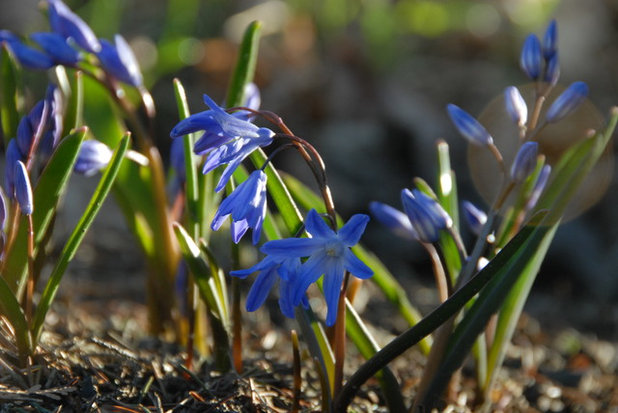
Susan Teare, Professional Photographer
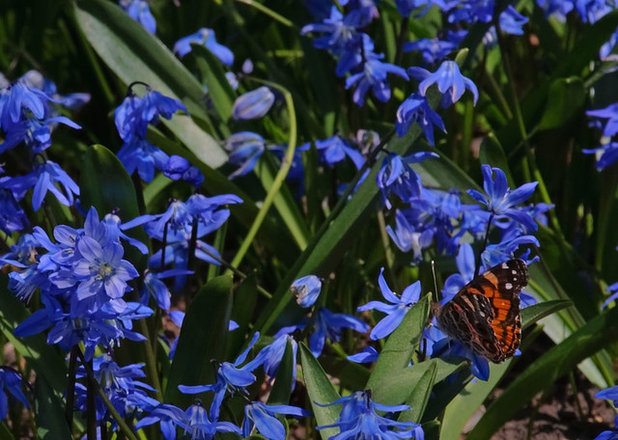
Barbara Pintozzi
Squill(
Scilla siberica)
This cheery little plant is attractive to butterflies but not to deer, rabbits or rodents. Squill is great in a lawn, and under trees before they leaf out. It spreads by seeds, so it naturalizes easily, too easily in some places. Squill is considered invasive in some areas, so check with your local extension service or native plant conservancy before planting it.
Where it will grow: Hardy to -50 degrees Fahrenheit (USDA zones 2 to 8; find your zone)
Light requirement: Full sun or partial shade
Height: 8 inches
Bloom time: Early spring
Planting tips: Plant 3 to 4 inches deep. Use about 20 bulbs per square foot.
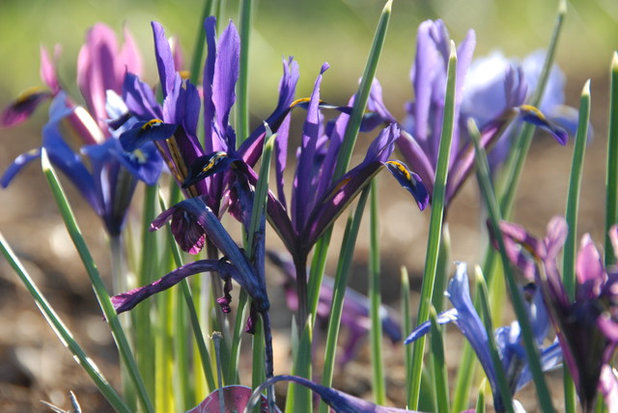
Susan Teare, Professional Photographer
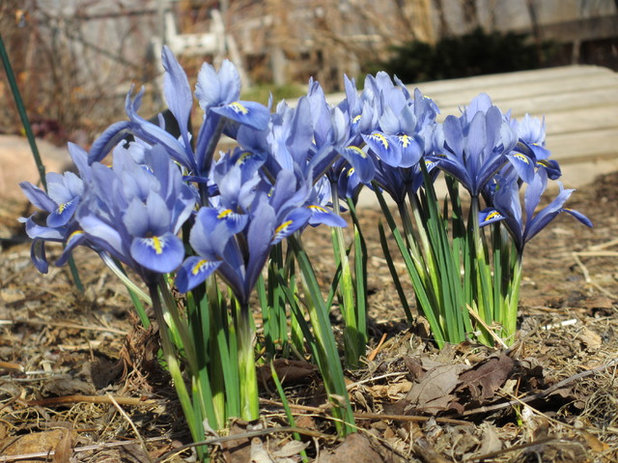
Benjamin Vogt / Monarch Gardens
Reticulated Iris(
Iris reticulata)
Not the tall, stately irises that bloom in June, these tiny little jewels pop their heads out when it’s still too cold for the taller irises. The flowers are fragrant. Their one flaw is that they give their best show the first year, then can take a few years to rebloom. For a consistent show, plant new bulbs every fall.
Where it will grow: Hardy to -20 degrees Fahrenheit (USDA zones 5 to 8; find your zone)
Light requirement: Full sun to partial shade
Height: 4 to 6 inches
Bloom time: Late winter or early spring
Planting tips: Plant 3 to 4 inches deep; needs dry soil in summer.
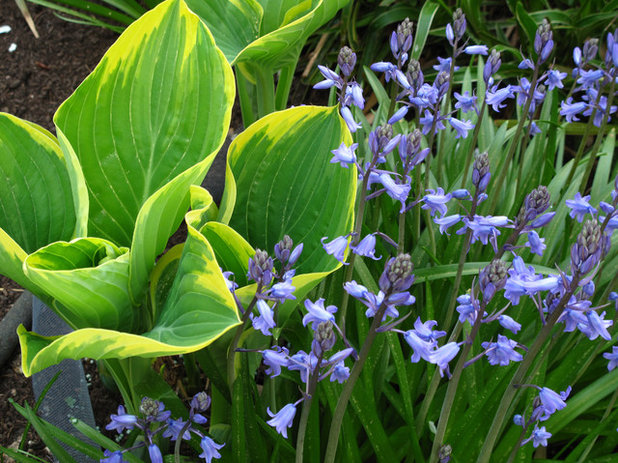
Le jardinet
Bluebells(
Hyacinthoides spp)
Taller than other blue-flowering spring bulbs, bluebells look like a looser, wilder version of hyacinths. There are English bluebells (
Hyacinthoides non-scripta), shown here, and Spanish bluebells (
Hyacinthoides hispanica), below.
How to tell them apart?
H. hispanica is unscented, with upright flowers.
H. non-scripta’s flowers are scented, and the tops of the flowers bend over.
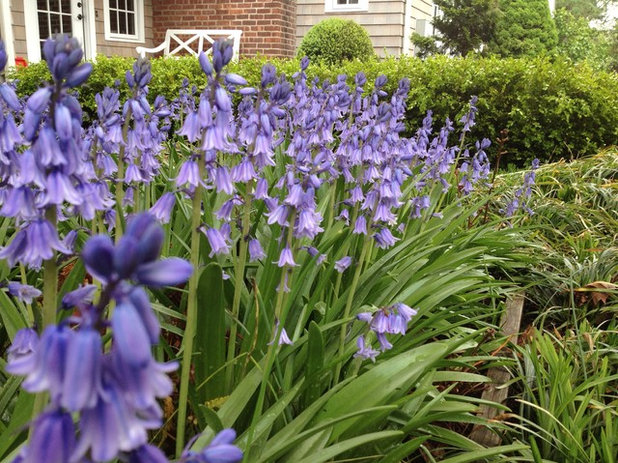
PetrowGardens Landscape Design
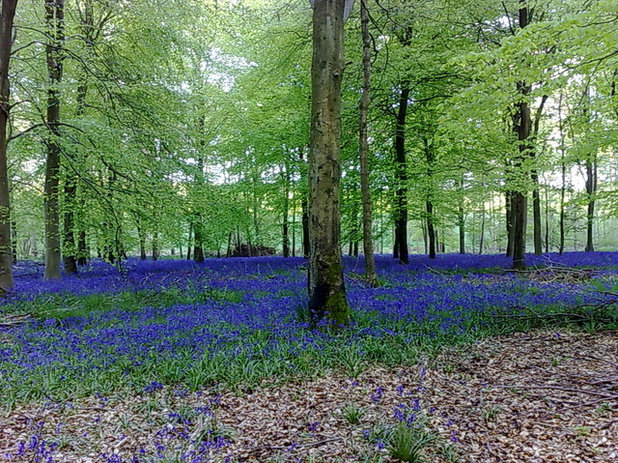
Beertje Vonk Artist
Where bluebells will grow: Hardy to -30 degrees Fahrenheit (USDA zones 4 to 9; find your zone)
Light requirement: Full sun or partial shade
Height: English, 8 to 16 inches; Spanish, 16 inches
Bloom time: Mid- to late spring
Planting tips: Plant 3 inches deep. Bluebells self-seed.
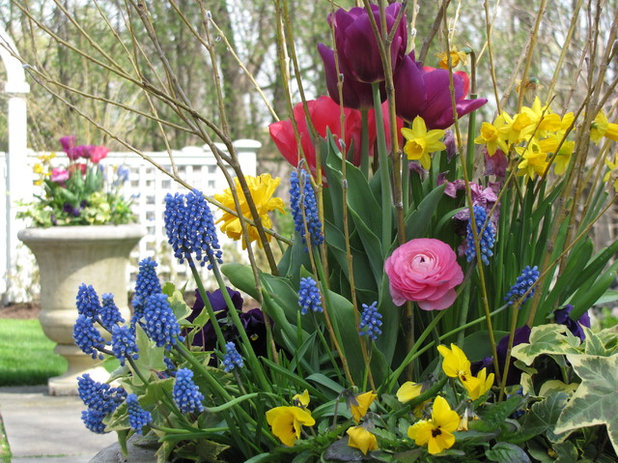
Greenhaven Landscapes Inc
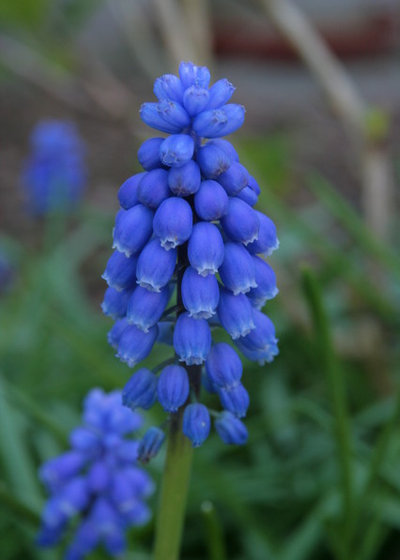
Longfield Gardens
Grape Hyacinth(
Muscari spp)
The flowers of grape hyacinths look like, well, little clumps of grapes waving on bright green stems. The plants are extremely easy to grow, and the flowers come in shades from white to the deepest cobalt blue. Grape hyacinths are great in containers, along borders and in lawns. “One of the longest-blooming spring flowers,” Langeveld says. When conditions are right, the bulbs will spread.
Where it will grow: Hardy to -30 degrees Fahrenheit (USDA zones 4 to 8; find your zone)
Light requirement: Full sun
Height: 8 inches
Bloom time: Midspring
Planting tips: Plant 4 inches deep. Can be planted in clay soil. When clumps get too dense, you can dig them up and divide them in autumn or after they’ve gone dormant in early summer. Don’t be surprised to see new foliage (but no flowers) appear in fall.
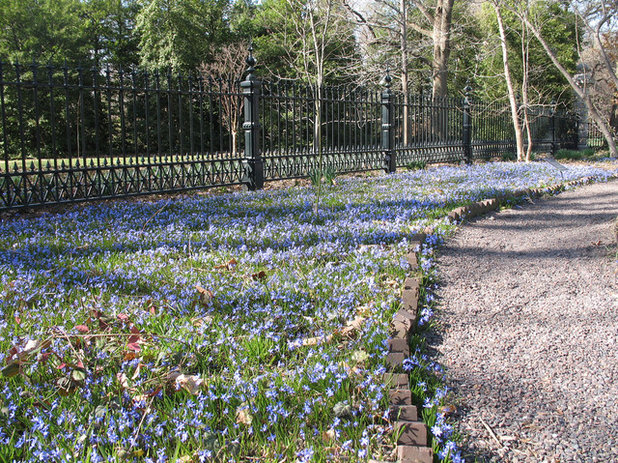
Missouri Botanical Garden
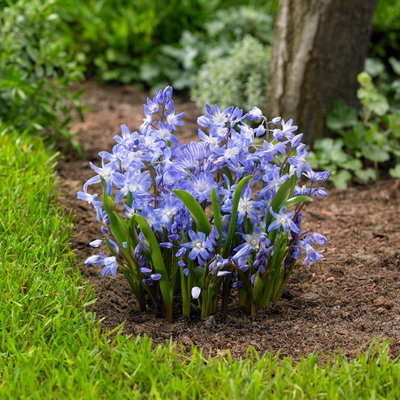
Longfield Gardens
Glory of the Snow(
Chionodoxa forbesii)
Though they look delicate, this plant's small, star-shaped flowers can be found blooming cheerfully through the snow, hence the common name. It is one of the easiest bulbs to grow.
Where it will grow: Hardy to -40 degrees Fahrenheit (USDA zones 3 to 9; find your zone)
Light requirement: Full sun
Height: 4 to 8 inches
Bloom time: Late winter or early spring
Planting tips: Plant 3 inches deep. It's good under shrubs or in a rock garden, or planted by the hundreds in a lawn.
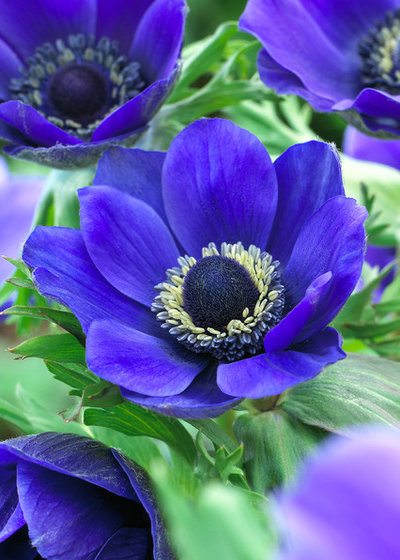
Longfield Gardens
Anemone De Caen ‘Mr Fokker’ (
Anemone coronaria)
Anemones are also known as windflowers. ‘Mr Fokker’ is “the most intense color blue you will probably find,” says Langeveld. When to plant it depends on your zone. If you live in zones 7 to 10, plant
A. coronaria in the fall; if you live in zones 3 to 6, plant it in the spring, after the ground has thawed. This bulb will not naturalize.
Where it will grow: Hardy to -40 degrees Fahrenheit (USDA zones 3 to 10; find your zone)
Light requirement: Full sun
Height: 12 to 18 inches
Bloom time: Midspring
Planting tips: Soak the bulbs in room-temperature water for up to 12 hours prior to planting. Plant 2 to 3 inches deep.





